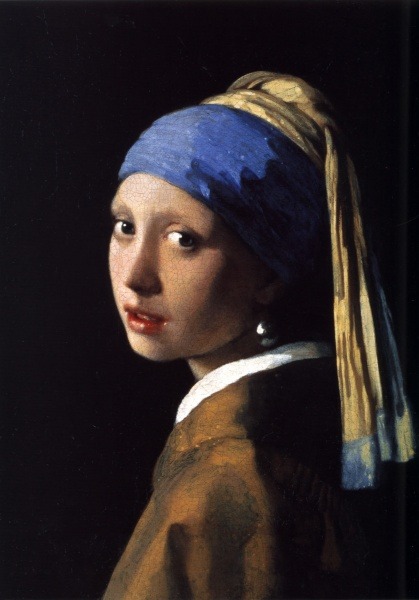Text
We have all heard the phrase “fake news.” This is the current slang term used to describe the propaganda we are currently experiencing. Propaganda is defined as dissemination of information—facts, arguments, rumors, half-truths, or lies—to influence public opinion (Smith, 2021). According to our text book it is derived from the word propagate, and was originally a neutral term on the act of spreading an idea to a large population. The idea of propaganda was eventually subverted by governments and other organizations to manipulate the beliefs, attitudes and actions of others. This evolved propaganda from is neutral roots into current systematic manipulation we see today (Lester, 2014)
What is the difference between propagating and persuasion? Persuasion is more or less convincing someone that your opinion or ideas are correct based on factual information. Propaganda is the effort to manipulate based on misleading and false information (Lester, 2014).
Determining what is persuasion versus what is propaganda can be difficult, especially with the current political climate. We are flooded with different images on television and over various social media platforms, and deciphering what is truthful and what is propaganda can be difficult. While searching for examples for this blog, I found that propaganda is being spread mainly in the form of social media memes and videos.
Example 1:

Here is a very simple example of recent (2018) social media propaganda being spread linking CEO of Facebook, Mark Zuckerberg to Russian Leader Vladimir Putin. There are no words on the propaganda, and there doesn’t need to be. By simply placing the two men in the same frame associates the two men together and fuels the belief that Facebook (and the media) is out to destroy America. This particular meme was traced back to Russian bots, and resurfaced when Facebook banned former President Donald Trump from its platform in January of 2021.
Example 2:

Here is another example of a social media propaganda meme. This meme was also proven to be backed and spread by Russian bots in 2018, during the height of the investigation into Donald Trump’s Russian ties and business dealings. This was one of many red herring arguments used to manipulate and redirect the attention elsewhere. What’s most disturbing about this meme is the focus on the Muslim religion. This is a very deliberate manipulation to incite anger against a group of people based off fear and intolerance.
Example 3 and 4:


This is where the water gets muddy with persuasion versus propaganda. In these posters by Shepard Fairey. The first, of Former President Barack Obama was done shortly after his election win in 2008. It was made to reflect the uplift in optimisum after the the previous eight years and administration. Was there hope with the election of a new administration? Yes. Would the same poster have been created if John McCain, the Republican nominee had won? That is where the line can be blurry between persuasion versus propaganda. The fourth example, also a work by Shepard Fairey, is an appropriation of his own poster. It is a push to adopt, rather than buy pets. The dog looks so sad, and his tag reads “a mutt like me.” Both posters are attemping a postitive message, and are persuasive, but are they propaganda? I would say they walk the line, but no. There was a sense of optimisim in 2008, and adopting a dog is a great way to support local shelters and animal rights.
References:
Carol A. Wells, C. (2021). Poster politics: Understanding the art of persuasion. Retrieved 4 March 2021, from https://www.cnn.com/style/article/political-posters-oped/index.html
Lester, P. (2014). Visual communication (6th ed., pp. 80-81). Boston: Wadsworth.
Smith, B. (2021). propaganda | Definition, History, Techniques, Examples, & Facts. Retrieved 5 March 2021, from
https://www.britannica.com/topic/propaganda
Examples 1 and 2 are unknow sources. I pulled them from a family members Facebook and Google search was not conclusive.
0 notes
Photo

I had never heard of Volver before being assigned to review it for my Visual Communications class. It has easily made the top ten so far this year. Volver is a melodrama directed by Pedro Almodóvar. As I started watching it, I was brought back to my high school days of watching Passions, a telenovela-type soap opera that played on NBC. I mean this in the highest regard, this show was captivating. The movie is set in Madrid, and Almodóvar seemed to pull in the vibrancy of the city in each scene. Bright use of color pulls you in, paired with the heart wrenching storyline, and the performance of Penélope Cruz as Raimunda, I was hooked.
I equated this to a soap opera due to the sheer audacity of the story line. First it was a melodrama about a cover up of a death, then it was a supernatural film, but in the end it was a love story about the love of a mother. This is what brought me back to that NBC show Passions, the frequent plot twists.
Raimunda, with her over exaggerated cleavage and black eyeliner, is a hardworking woman trying to support her lazy husband and feisty teenage daughter. The movie opens with Raimunda, her sister Sole, and daughter Paula cleaning up the graves of Raimunda’s parents, who had died in a tragic fire, in each other’s arms. Shortly after, the story has its first shift, when Raimunda’s daughter is forced to kill her father in an act of self-defense. Raimunda, in a very vivid scene is forced to clean up the mess and hide her husband’s body. The scene of her washing the knife in the sink is so nonchalant, she simply washes it in the sink with the sink full of dinner dishes. This scene caught me. Lack of emotion from the character and the use of almost upbeat background music captured the most basic of human instinct, protecting your offspring. It was still emotional, but it didn’t hurt my heart as much.
Almodóvar repeats this pattern of taking moments that stereotypically would be dramatized and dark, and with the use of lighter music, bright colors color, and acting skills from Cruz (and cast), seems to make them almost lighthearted. A neighbor/friend stops by during clean-up of the body and asks Raimunda why she has blood on her; her classic response is “Women’s trouble.” When Irene, Raimunda and Sole’s mother “comes back from the dead” she frequently hides under the bed so Raimunda won’t find her. She seems nimble for a woman of her portrayed age. There are countless scenes where I expected darkness, but the movie stayed bright and lighthearted.
In the end, thought the movie was vibrant and light, the story is darker than I imagined. Paula, Raimunda’s daughter was the result of an incestualize rape, and when Irene, Raimunda’s mother, found out she burned her husband and his lover to death in a fire. This ultimately faked her own death, and she was not a ghost, just a mother willing to kill for her daughter. IMDB (2006) describes the movie as “after her death, a mother returns to her home town in order to fix the situations she couldn't resolve during her life.” I would describe this more as a melodrama love story between mothers and daughters that Almodóvar used a bright palate and lighthearted soundtrack to paint.
Image: Volver (2006) - IMDb. (2021). Retrieved 2 May 2021, from https://www.imdb.com/title/tt0441909/?ref_=tt_mv_close
0 notes
Photo


I chose Girl with a Pearl Earring (1665), which is an oil painting on canvas by Dutch artist Johannes Vermeer. This painting is not a portrait, but a tronie, which a Dutch term for a depiction of a person or character (Tronie - The Art and Popular Culture Encyclopedia, 2021).
The woman in the painting is set against a dark background so the focus is solely on the woman. The woman is young, wearing a blue and gold turban, a gold shawl or jacket with a white collar, and a large pearl earring. The use of color in the folds of her jacket or shawl give the impression that she is sitting, even though no chair is seen. She seems to be looking directly at the viewer with her mouth partially opened, almost like she turned and glanced over her should to say something and was caught in a moment time.
The light on her face suggests that there is a window or light just outside of the view, shining a softly on her face. Vermeer is known for using light, rather than lines to create form. This is also seen in the reflections painted in the eyes, on the gloss of her lips, and in the reflection of the pearl earring.
For my re-creation I enlisted the help of two of my kids. With a photo, you have to use a real subject, so after a lot of persuasion I got my daughter to agree to remove her makeup and model for me.
I tried two different techniques. The first was to use the "spotlight portrait" mode on my daughters iPhone. While it definitely worked, but the photo looked too "digital" and didn't have the soft light that Vermeer mastered in the painting. I then enlisted my youngest to stand behind his sister with a dark plaid blanket. Though the background is lighter, the blanket softened the photo and gave it a more textured background.
My daughter wrapped her hair in a blue and white scarf, wore a dark hoodie, and a large silver hoop. I had her seated in a chair covered by the mentioned blanket, next to a bright lamp. I would have preferred to do this in front of a window, but her work schedule didn't allow for it. I tried having her pose like the painting, but after about 30 outtakes, I tricked her. I cracked a joke I knew she wouldn't think was funny and she turned and looked at me with a slight smirk.
The light in the photo is brighter than the original and the viewer won't catch it in her eyes like in the original, but it reflects nicely in her scarf and off the earring. I used the filtering settings in my phone to darken the photo, add warmth, and soften the lines around her face.
Artandpopularculture.com. 2021. Tronie - The Art and Popular Culture Encyclopedia. [online] Available at: <http://www.artandpopularculture.com/Tronie> [Accessed 20 April 2021].
Encyclopedia Britannica. 2021. Girl with a Pearl Earring | Artist, History, & Facts. [online] Available at: <https://www.britannica.com/topic/Girl-with-a-Pearl-Earring-by-Vermeer> [Accessed 20 April 2021].
1 note
·
View note